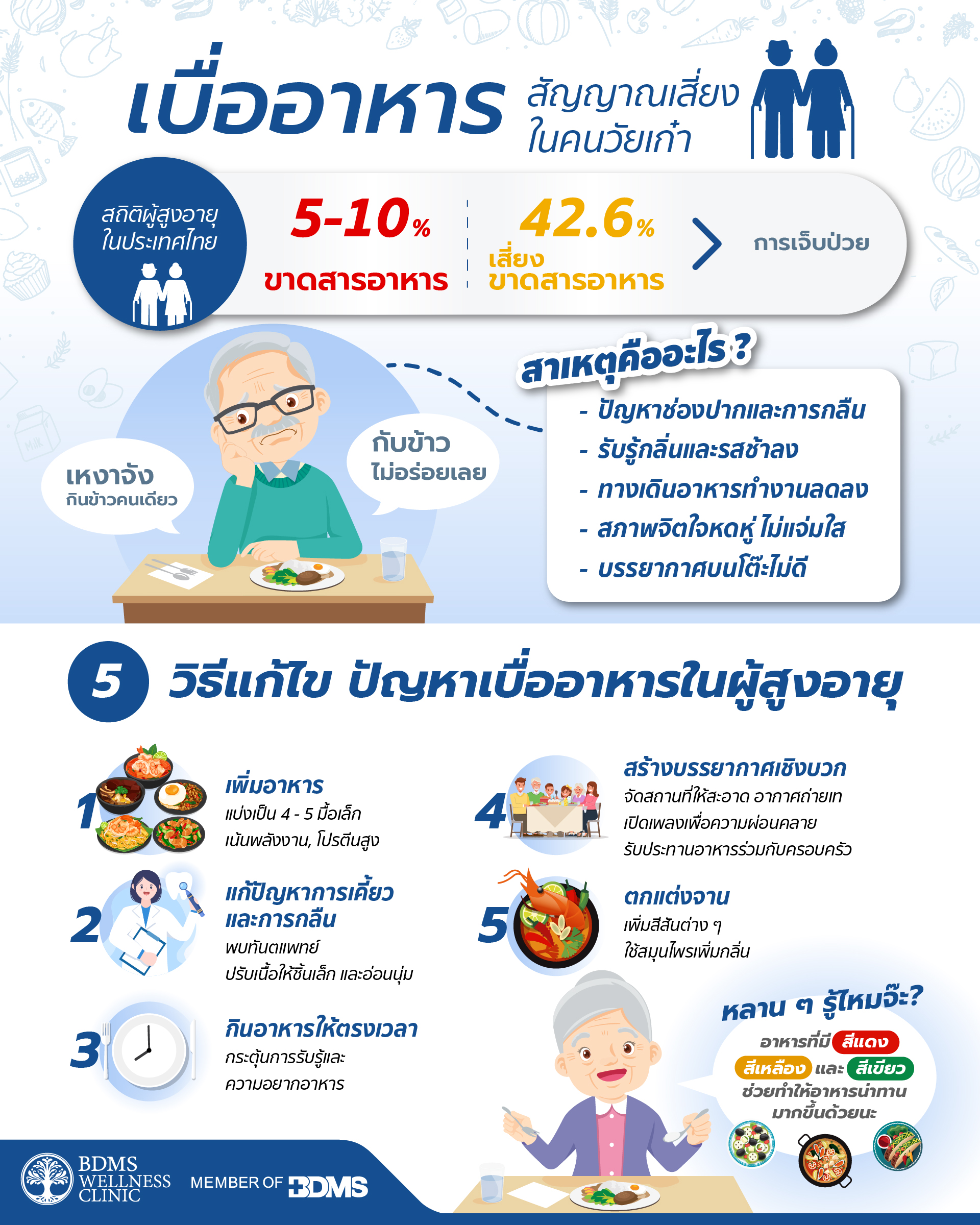Anorexia of Aging
Anorexia of Aging can reflect an elderly health and well-being. When seniors consume fewer calories than required, their bodies do not receive adequate energy and nutrients. Consequently, this leads to weight loss, increasing the risks related to infections, delayed recovery rates, and Sarcopenia—a condition contributing to mobility issues, higher risk of falls- all referred conditions can significantly diminish their overall quality of life.
Various Factors Leading to Anorexia:
-
Oral and Swallowing Problems
Many seniors face common challenges related to their oral health issues such as cavities, missing teeth, gum disease (periodontal disease), dry mouth (xerostomia), and swallowing difficulties (dysphagia). In this age group, these issues often get in the way of regular eating habits.
-
Impaired Smell and Taste Perception
The pleasure of eating is largely came from the sensory experience of food. However, as individuals age, their olfactory receptor cells in the nasal cavity reduces in functioning, and taste bud counts decline, causing a decreased ability to perceive taste, known as "Hypogeusia"
-
Gastrointestinal Function Decline
Slower gastric motility and reduced stomach elasticity can result in a faster fullness and prolonged food retention in the stomach. Consequently, the elderly may feel full for extended periods after meals.
-
Psychological Factors
Emotions significantly influence the elderly's eating satisfaction. Stress, depression, boredom, sadness, or a general lack of enthusiasm for life can lead to decreased appetite and reduced food intake.
-
Tableside Environment
The dining environment plays an essential role in influencing elderly eating habits. Individuals who live alone or often dine alone may face issues with less appetizing food, uncomfortable eating spaces, or non-hygienic conditions, ultimately leading to decreased food consumption or rejection to eat.
We have identified the causes; let's learn 5 tips to address the issue of Anorexia in the elderly.
Add Additional Meals:
Arrange a dietary plan featuring 4-5 smaller meals throughout the day, rather than the traditional three main meals. Prioritize foods rich in energy and protein.
Food Presentation:
Make the meals look more appealing by arranging them attractively. Select a variety of food colors, such as red, green, orange, and yellow, and incorporate a diverse range of herbs to enhance aroma and flavor.
Address Chewing and Swallowing Issues:
Seek dental care for oral health problems. Opt for soft foods or cut food into smaller, more manageable pieces. If swallowing or choking problems persist, consult a specialist for guidance on optimizing food viscosity.
Create a Positive Dining Atmosphere:
Encourage shared dining experiences with family and friends. Arrange a simple, comfortable, clean dining area with proper ventilation and consider playing soothing music to create a warm, relaxing ambiance that enhances mealtime enjoyment.
Set Meal Schedules:
Set regular meal times to stimulate the body recognizing hunger signals and boost appetite.
Anorexia of aging in the elderly is considered a warning sign of possible upcoming health concerns. Therefore, by implementing these five tips, we can ensure their enjoyment of meals, enhance their overall well-being, maintain of physical health, and overall vitality, thereby preventing future illnesses.
BDMS Wellness Clinic
โทร: 028269999
LINE: @bdmswellnessclinic
Reference
- Rusu A, Randriambelonoro M, Perrin C, Valk C, Álvarez B, Schwarze A. Aspects Influencing Food Intake and Approaches towards Personalising Nutrition in the Elderly. Journal of Population Ageing. 2020;13(2):239-256.
- WikbyK, Fagerskiold A. The willingness to eat. An investigation of appetite among elderly people. Scandinavian Journal of Caring Sciences. 2004;18(2):120-127.
- The Best Practice Advocacy Centre New Zealand. Strategies to improve nutrition in elderly people - Prescription foods [Internet]. Bpac.org.nz. 2011 [cited 4 April 2022]. Available from: https://bpac.org.nz/bpj/2011/may/elderly.aspx
- Landi, F., Calvani, R., Tosato, M., Martone, A. M., Ortolani, E., Savera, G., Sisto, A., Marzetti, E. Anorexia of Aging: Risk Factors, Consequences, and Potential Treatments. Nutrients. 2016;8(2):69.






